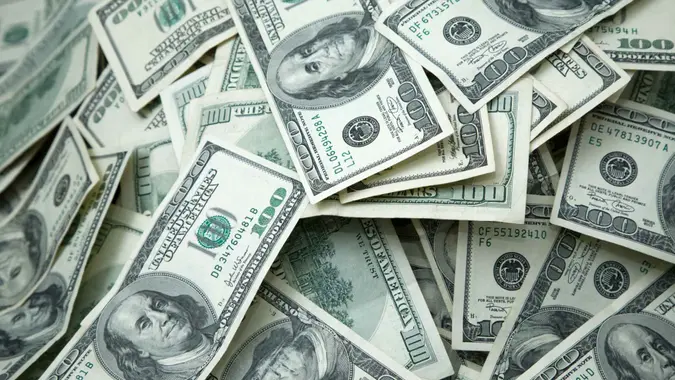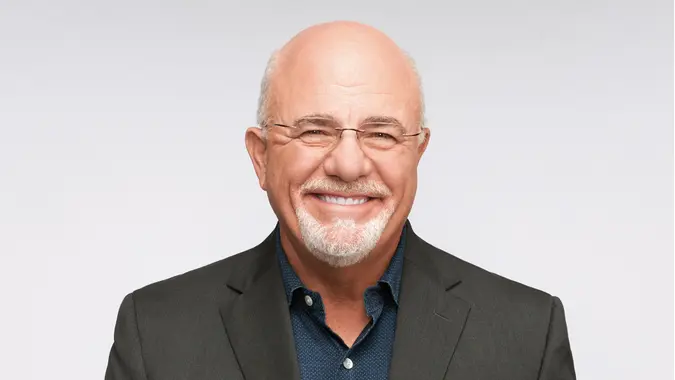Jaspreet Singh: Why the Middle Class is Disappearing

Commitment to Our Readers
GOBankingRates' editorial team is committed to bringing you unbiased reviews and information. We use data-driven methodologies to evaluate financial products and services - our reviews and ratings are not influenced by advertisers. You can read more about our editorial guidelines and our products and services review methodology.

20 Years
Helping You Live Richer

Reviewed
by Experts

Trusted by
Millions of Readers
You may have heard people talking about how the middle class is disappearing. It’s not just a feeling or an impression. Statistics back it up.
In 1971, 61% of the population fell into the category of middle class. As of 2021, only 50% of Americans qualified for this category, according to study from the Pew Research Center.
How Much Money Does a Middle-Income Household Make?
The Pew Research Center defines middle class as any household earning between two-thirds and twice the median American household income. In 2022, the median household income was $74,580, according to Census Bureau data.
That means anyone earning between $49,720 and $149,160 could be considered middle class as of 2022, the most recent year for which comprehensive data is available.
Jaspreet Singh: How An Economic System Works
In a recent YouTube video, Jaspreet Singh, finance expert and host of “Minority Mindset,” explained exactly why the middle class is shrinking — and how you can elevate your financial status despite the factors working against you.
“Our economic system keeps some people rich at the expense of everybody else. Now this may sound mean, but that’s exactly what our economic system was designed to do,” Singh said in the video.
He went on to explain that once you understand how money works, you’ll know the steps you need to take to become wealthy. But first, let’s explore how we got where we are, with a shrinking middle class and rising inflation.
Need a Two-Income Household to Keep Pace with Inflation
In the video,Singh shared how inflation has affected middle class households since 1971. “In 2023, you need $6.93 to buy what $1 could back in the year 1973. That means we have seen an inflation rate of around 600%,” he said.
Meanwhile, the median household income in America for white families in 1973 was just $12,600 per year. That number rose to $74,500 in 2022, based on U.S. Census Bureau data shared by Singh. “That is a growth of just under 600%,” he said.
Based on those numbers, it looks like salaries have kept pace with inflation, which means Americans should have the same buying power as they did in the ’70s. Except that in the 1970s, most households had just one income, according to Singh, while today’s families frequently have two working adults.
“That means that people’s incomes have risen, except they haven’t risen fast enough to keep up with the higher cost of things. In fact, now you need two people’s incomes just to keep up,” Singh said.
Meanwhile, national debt has risen from $450 billion in 1973, which equals roughly $3 trillion in today’s dollars, up to $34 trillion at the end of 2023.
The Role of the Federal Reserve and Inflation
Singh then noted that the Federal Reserve has the ability to print money at any time to help the U.S. fund spending bills or pay off national debt. But, as the Federal Reserve prints money, the value of those dollars drops, causing inflation.
“We saw the impacts of inflation after all the spending during the pandemic… all this cheap money created this huge demand and created all this ability for people to spend, which caused the prices of things to rise,” Singh said. “And we still have inflationary issues that we’re seeing today. So if inflation continues to stay around, and we expect inflation to stay around, well, that means that you can expect the prices of things to continue to rise faster than incomes.”
Even as inflation has tapered off due to the Federal Reserve’s measures, including raising interest rates to slow the flow of money, it’s still a tremendous factor that hinders people’s ability to grow wealth.
But, as Singh said, if you know how the economic system works, you can leverage it to your benefit.
“If you don’t understand the economic system, if you don’t understand how money works, you’re going to be the person just paying the price. And you’re going to be the person that’s making everybody else rich, and you’re going to be the person that can never understand why you can’t get ahead financially,” he told viewers.
Investing: The Key to Wealth
Fortunately, there’s a solution to help middle-income earners shift their financial situation in their favor.
“You can’t just continue being a consumer,” he said. “You can’t continue to spend all of your money… You have to own a piece of the economic system. You’ve got to start investing.”
You can start with as little as $1, $10, or $100, according to Singh. The important thing is to educate yourself on the vast choices available and then get started.
Singh suggested options such as stocks, exchange-traded funds, or real estate. You can also invest in businesses or start your own business.
Financial Education: Where It All Begins
In order to become wealthy from investments, you must focus on your financial education, according to Singh. It starts with the basics of using your money to make more money for yourself, not to make other people rich.
“You blow this money to look like you’re rich,” he said, referring to people who drive expensive cars or purchase expensive, brand-name luxury products. “The people that look like they’re rich are oftentimes the people that are making everybody else rich.”
Once you shift your mindset to one of an investor, there are plenty of resources available to help you find the best ways to invest.
“This is where you have to find what is the right passion for you and [figure out] how much money you need get started,” Singh said. “How much time are you willing to put in? How much risk are you willing to take?”
Once you take the time to focus on your financial education, Singh said, you’ll find that you are in charge of how much wealth you can build. And that is the first step toward financial freedom and preserving the middle class in the U.S.
 Written by
Written by  Edited by
Edited by 
























